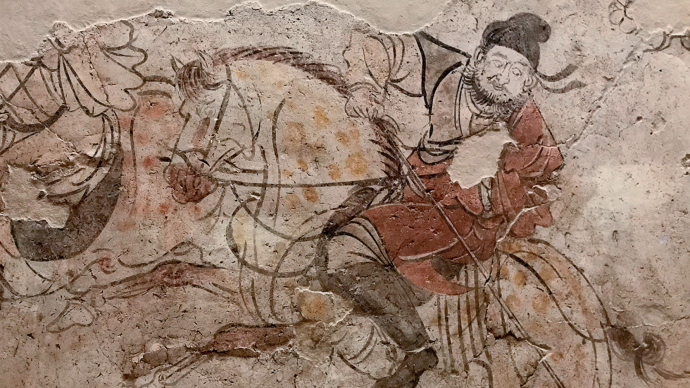
In recent years, the tomb murals of the Northern Dynasties, Sui and Tang Dynasties have been continuously discovered by archaeology, and the feature of "people" as the central position of the theme in the murals is very prominent. What is especially surprising to the world is that various images of the Hu people with distinctive personalities also appear constantly. At that time, there should be a large number of painters active in the front line of mural painting. They were familiar with the life of the Hu people and expressed the captured life form of the Hu people in the murals. There are no frontal portraits but silhouettes in profile.
This paper selects some images of the Hu people on the newly unearthed murals, tries to explore the fate of the little people at the bottom of the society in the context of the big era, and reveals the medieval civil society in which the lower-class Hu people lived.
Realistic "ingenuity" that has always faced the real society
Traditional mural studies believe that the early Tang Dynasty was dominated by court art, and historical paintings occupied an important position. Most of the contents were ceremonial guards of honor, decorative carriages and horses that expressed hierarchical authority, and retained the sacred feeling since the Northern Dynasties. The characters in the frescoes are also clearly master and servant, with a clear sense of class. However, after Wu Zetian, the subject of hunting and ceremonial travel decreased, and there were more and more murals on the theme of home life, which was consistent with the easing of social unrest and the prosperity and stability of life. In particular, the themes of the tomb murals at the middle and lower levels often focus on showing the life of the rich and noble families of officials and officials. Tomb art no longer shows the authority of the state to some extent, but is closely related to daily life and tends to be simple.
In the tomb murals of the Tang Dynasty, foreign religious art never dominated, and the idea of redemption was rarely conveyed. Murals do not express suffering and romantic ideas, even those experienced in the pursuit of a happy life. Tang tomb murals depict a wide range of social real life themes. Some scenes have profound themes and exquisite painting skills. The image of the Hu people is a typical representative, and has a high value in the history of murals.
This paper selects the tomb murals unearthed in recent years, and uses Hu appearance, Hu clothing, Hu boots, etc. as clues, and summarizes the various labors of the lower Hu people, involving people, customs, animals and other knowledge systems. After more than a thousand years of various accidental survival and inevitable contradictions, these ancient paintings can be called "relics" and "relics", which are irreplaceable by any documentary description.
In the tomb murals, these painters used rough and flexible realistic painting methods to "paint real images". Although they are not "masterpieces handed down from the world" in the history of art, they do not have the aesthetic appreciation value of famous artists, but they are interesting treasures. The painters may have observed the life scenes of the local Hu people up close. The works have unique customs, accurately convey various figurations, and reflect the microscopic life of the people at the bottom of the era, making the social life of the medieval Sui and Tang Dynasties into the field of art history.
Many murals show us new images that were not seen in the past. Although the details of some frescoes are dilapidated, some are ambiguous, and most of the pictures are incomplete, the new pictures bring important basis for studying history, and also bring new thinking.
1. Kneeling and sitting (Figure 1) 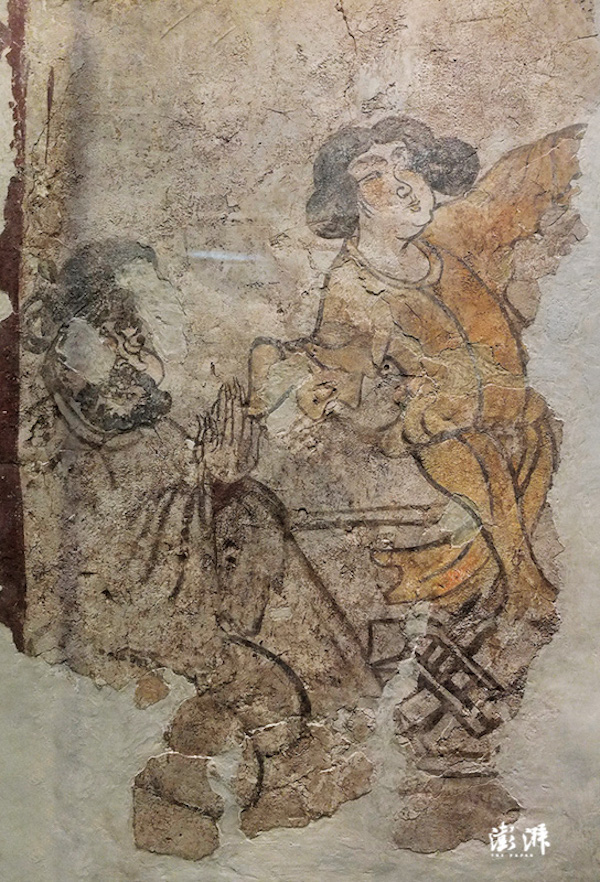
[Picture 1: 1] The murals of the Tang Tomb in Xinzhaizi, Guodu Street, Chang’an District, Xi’an, exhibited at the Qujiang Art Museum of Xi’an Photo by the author
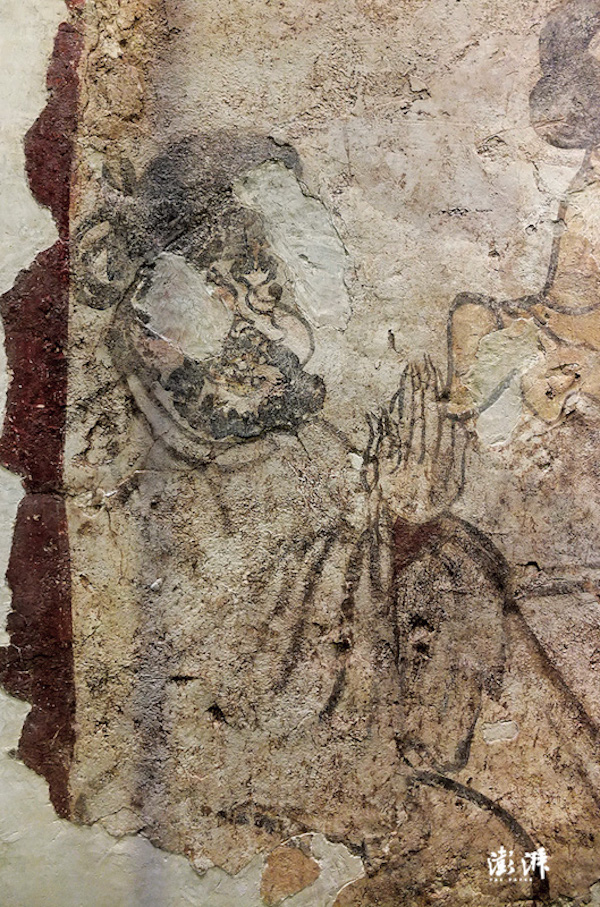
[Picture 1: 2] Murals of Tang Tombs in Xinzhaizi, Guodu Street, Chang'an District, Xi'an (Part of Hu people)
This mural was unearthed in Guodu Town, Chang'an District. Hu people are "Kneeling Hu". The way of "Hu kneeling" is usually one-legged on the ground, but this Hu knelt on the ground for both legs and put his hands together, as if praying. The Han woman next to her should be a maid. Whether they are praying for the safety of the owner of the tomb, or praying for the protection of the people like themselves, unfortunately, it cannot be further speculated due to the broken picture. However, the painter not only pays attention to the creation of the overall atmosphere, but also accurately grasps the scale of the details. The murals have a strong visual impact.
2. Picnic (Picture 2) 
[Picture 2: 1] The banquet on the west wall of the Yongdao tomb M318 of the Tang Tomb in Shiliu Village, Jingyang, Shaanxi Province

[Picture 2: 2] Banquet on the west wall of Yongdao Road M318 of the Tang Tomb in Shiliu Village, Jingyang, Shaanxi Province (part)
In this mural found in Shiliu Village, Jingyang, Shaanxi Province, Hu people with thick beards and high noses are sitting on the ground, holding wine glasses. The ground is full of three-legged wine bottles and three-legged plates. Pictures of picnics in private places appear many times in the murals of Tang tombs, but most of the depictions are leisurely Tang people and men and women, and Hu people are rarely seen in the past. The mural not only reflects the prevalence of banquets and night banquets in the Tang Dynasty, but also mainly expresses the cultural life of Hu Han participating in banquets, providing very important materials for the study of the social history of entertainment. The rendering of the appearance of the Hu people in the picture of the picnic reflects the characteristics of the Tang Dynasty who liked to socialize, and also reflected the change of social interaction from the royal court and aristocrats to the wealthy middle-level officials. It can be said that private picnic occasions not only show the vitality of Hu Han's interpersonal relationships, but also reveal signs of social life communication needs.
3. Guard of honor (Figure 3, Figure 4) 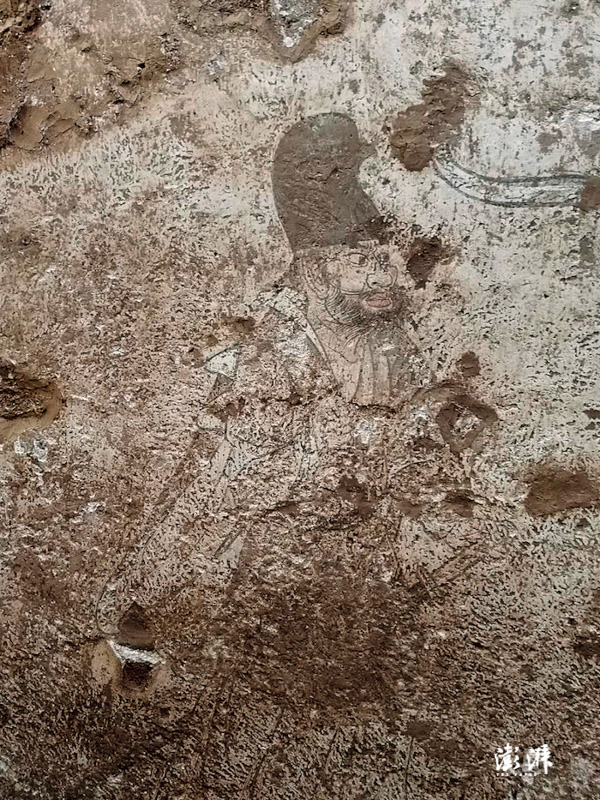
[Picture 3] One of Hu Renyi's Guards in the Tang Tomb Road in Konggang New Town, Xixian New District, Xi'an
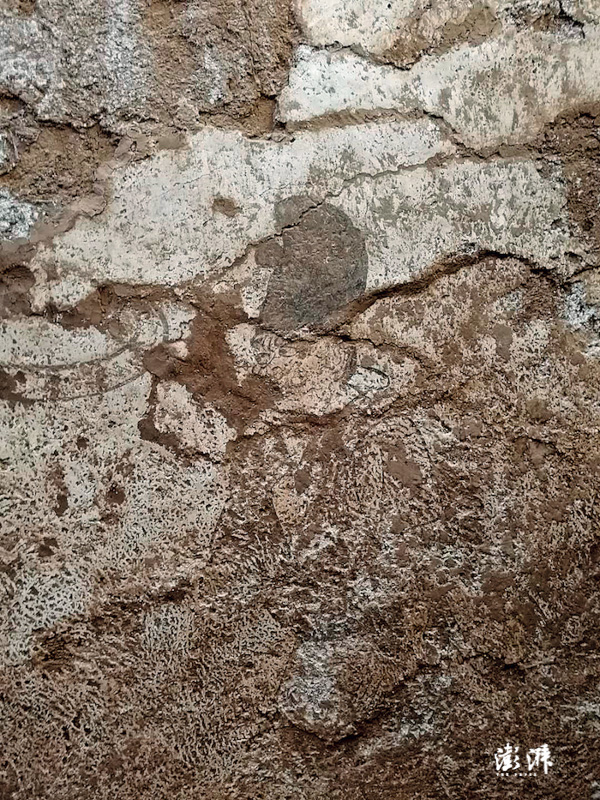
(Picture 4) No. 2 of Hu Renyiwei in the Tang Tomb Road in Konggang New Town, Xixian New District, Xi'an
The mural is located at the exit of the tomb passage. It is painted with a majestic military officer with the appearance of the Hu people, which has a kind of arrogance of the heroes. Although there are many records of "fan generals" in the history books, it is very rare to see them in pictures. In these frescoes, the warriors with handsome faces, their faces covered with wind and frost, high noses and deep eyes, and bulging eyes are lifelike and daunting. I have to admire the creative skills of the painters as much as the painters who serve the court.
The painters were obsessed with painting the Hu people, and their depictions featured loose and bold brushstrokes and flexible large color blocks, which were "avant-garde" works at that time. We may speculate that in the “labor-intensive” mural creation teams such as “Painting Club”, “Painting Workshop”, “Workshop” and “Artisan Club”, there are a group of painters who are pondering how to please the tomb owner, win the favor of the employer, and how to It shows the deceased's memory and recollection of the good life they once had, in order to find a way to survive. They inherited the styles of "Wu Jia-like", "Zhou Jia-like" and "Zhang Jia-like" (Zhang Xuan). In the process of creation, they learn from each other and form a unique painting technique. The words "painter Ping Duozi" and "painter is born" appear in Dunhuang documents, indicating that painters are also divided into "painters", "painters" and "craftsmen" according to their grades. We don't know whether the tomb murals have the "French" and "style" powder basis, and there is no trace of "Wule's work name" on them, which is "anonymous art history". However, later generations praised the art of "Tang Gong" as unprecedented, and the style of "Tang painting" also spread far and wide.
Some of the frescoes are damaged, and the pictures cannot be identified in detail. This may be due to the long history and robbery, or it may be related to the digging of graves and the destruction of tombs due to the ups and downs of the political situation. The white-grey layer of grass mixed with mud on the tomb wall is too thin. Although the painting method is simple and rough, the characters are delicate and fleshy, and the content displayed is impressive. The depiction of the Hu people by the painters is not restricted by the rigid funeral system at all, but does whatever they want with a lively taste, which greatly expands people's vision and imagination. Some superb details make the picture more vivid. vivid.
2. The painter's record inheritance has a special "craftsmanship"
These newly unearthed murals have realistic effects, and some of the images are painted with astonishingly fine brushwork. The Shaanxi Institute of Archaeology alone excavated the Konggang tombs in Xixian New District, and found that about 24 tombs of the Sui and Tang Dynasties had images of Hu people in the murals, and their identities included the master, the groom, the camelman, the waiter, the maiko, the music player, etc. The scenes are colorful, including envoys paying homage, and gatekeepers chatting with dwarfs, reflecting the prayer of the tomb owner and his family for "a stable life and a peaceful life", asking the painter to paint the pictures of their lives.
Compared with the great masters of painting in the Tang Dynasty, the tomb murals created by unknown painters are surprisingly vivid. From Tang Taizong to Xuanzong period, many famous painters were active in the society, such as Wu Daozi, Wang Wei, Chen Hong, Qian Guoyang, Han Gan, Lulenga, etc. Among them, there were many court painters who worshipped the imperial court. But at the same time, the folk painters did not doodle casually. They also paid attention to "refinement and delicacy", and carefully identified the contents of the frescoes, such as Fanbu, Fans, customs, etc. Although the theme became more and more popular and secular. , but the characters are all "photographs" derived from careful observation. Mr. Jiang Boqin once pointed out that the officials and eunuchs of Dunhuang in the Tang and Five Dynasties "called good workers" and "pre-painted the rituals of life" before their death, that is, they asked painters and painters to paint the "true face" on the silk for "true hall" and "shadow". It was a popular fashion at the time.
It is worth considering that the painters did not elaborately embellish the life of the false tomb owners, or magnify or expose the hierarchical society at that time, but depicted the life of the Hu people through the real life of the Guanlong nobles and high-ranking officials. situation. The royal dignitaries must maintain the official rank difference, the tombs must have the standard style of ritual system, and the murals must also reflect the class treatment under the ritual system, but this ritual system is divided into "court rituals" and "civil rituals". Therefore, depicting The "image" of the Hu people is not an aesthetic touch, but a scene image of similar things after the infiltration of various social strata into the funeral.
Are these Hu people real portrayals or abstract fiction? Some people think that the large number of paintings of Hu people is a superficial expression of the painters' kitsch at that time, or a playful ugliness, rather than a depiction of the mainstream culture's aristocracy, and there is no sense of majesty that blows at the face. However, the painter can observe life and depict the Hu people from the perspective of migrant workers, which reflects a simple creative attitude. The painter focuses on the characters from a low perspective, and the theme is closely related to the family, which puts a fresh life imprint on the creation. 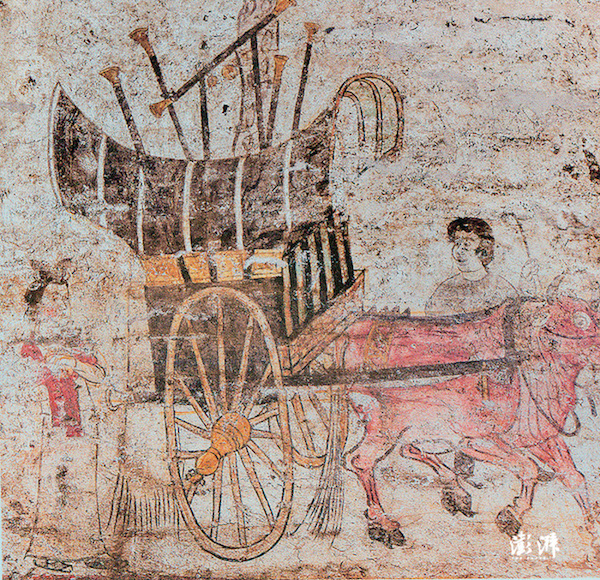
(Picture 5) One of the murals of the Tang Guoxing tomb in Taiyuan, Shanxi

[Picture 6] The second mural of Tang Guoxing's tomb in Taiyuan, Shanxi
For example, Hu people and grooms are more common. Hu people leading horses, taming horses or driving carts are the most common images in the murals of the Tang Dynasty. Two murals were unearthed from the Tang Guoxing tomb in Taiyuan, Shanxi (Figure 5, Figure 6). One of the paintings is of Hu people driving an ox cart. Curly-haired beard, holding a stick in his left hand and pulling the reins in his right hand, is looking left and right waiting for his master to ride. Another painting shows a Hu-man groom in a Hu robe, holding a whip in one hand and a tall horse in the other. This horse is not an ordinary horse. Judging from the wavy mane, it should be a steed contributed by foreigners. 
[Picture 7] Murals unearthed from the Tang Tomb in Dongzhu Village, Guodu Street, Chang'an District, Xi'an (left side) Photo by the author
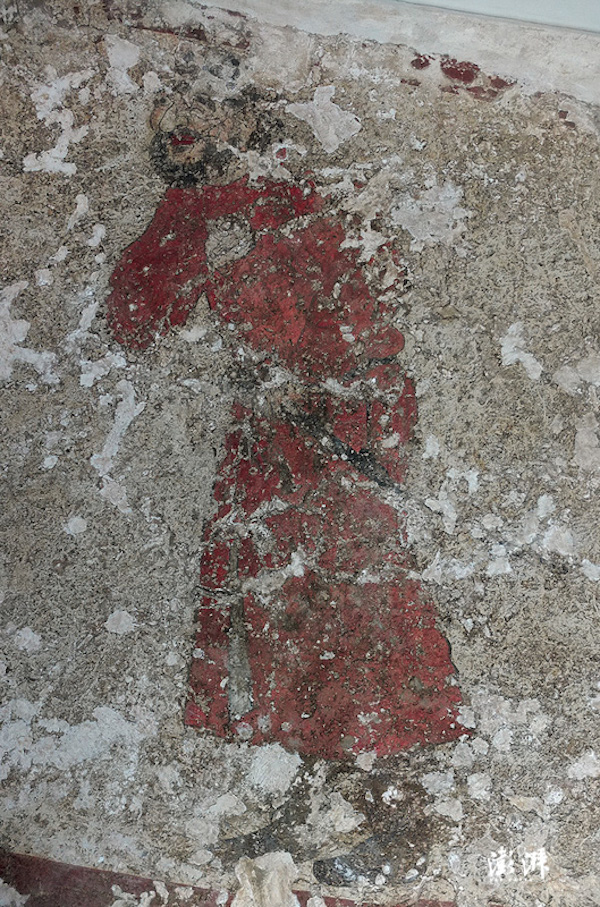
[Picture 8] Murals unearthed from the Tang Tomb in Dongzhu Village, Guodu Street, Chang'an District, Xi'an (right) Photo by the author

[Figure 9] Murals unearthed from the Tang Tomb in Dongzhu Village, Guodu Street, Chang'an District, Xi'an (Part of the Hu people) Photo by the author
For another example, there are many Hu people who act as guards and guards. Tang tombs are very ostentatious. In addition to the halberds that indicate their rank, many nobles of high families hired Hu people to show their rank. In the frescoes of the Tang Tomb in Dongzhu Village, Guodu Street, Chang'an District, Xi'an, Hu people stand on both sides (Figures 7 to 9), showing a respectful appearance. This kind of Hu people's guards often appear in the tomb murals, and it has become a fixed powder model. It may also be painted by craftsmen after slightly modifying the image of Hu appearance based on the common powder. In the frescoes of the Tang tomb at the Jinyang ancient city site in Taiyuan (Fig. 10), Hu people and Han guards stand symmetrically. The murals unearthed from the Tang Helianshan tomb in Taiyuan also have similar images of Hu people guarding the gate (Fig. 11, Fig. 12). Taiyuan was the northern capital of the Tang Dynasty. There were not many murals unearthed in the past, and the painting level was not high, but these murals reflect the pursuit of the lower classes of the society for the life of the Gaomen, and are also a portrayal of the occupation and status of most Hu people after entering China. 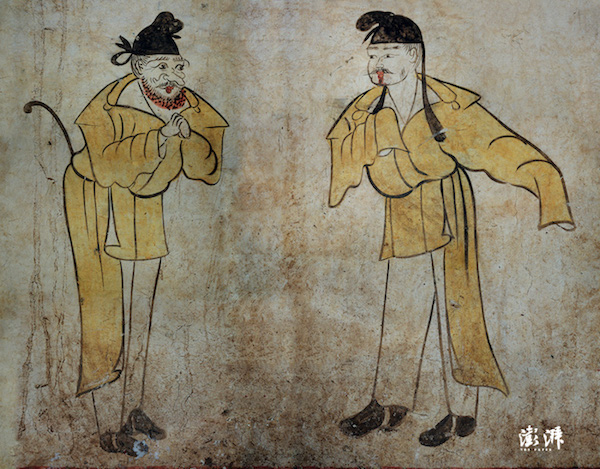
(Picture 10) Murals of Tang Tombs at Jinyang Ancient City Ruins in Taiyuan
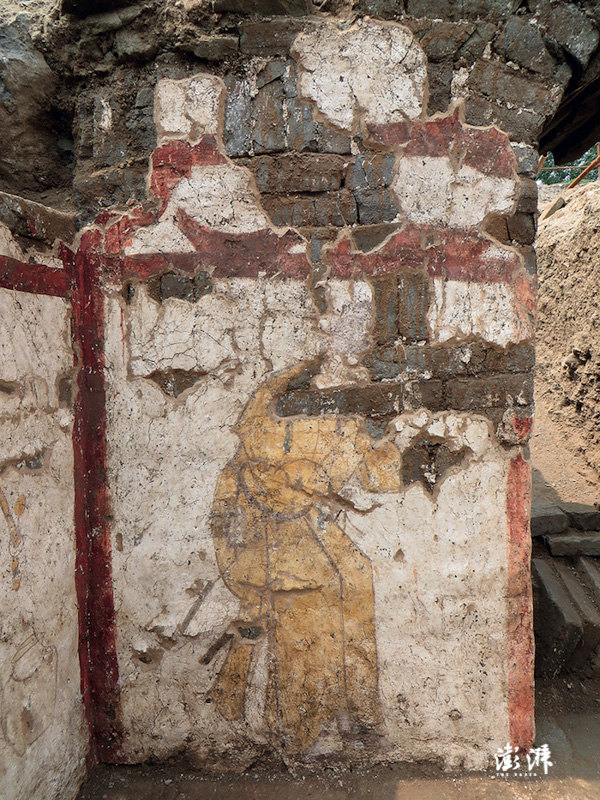
[Figure 11] Guards on the east side of the south wall of M2 tomb of Helian Mountain in Taiyuan, Shanxi
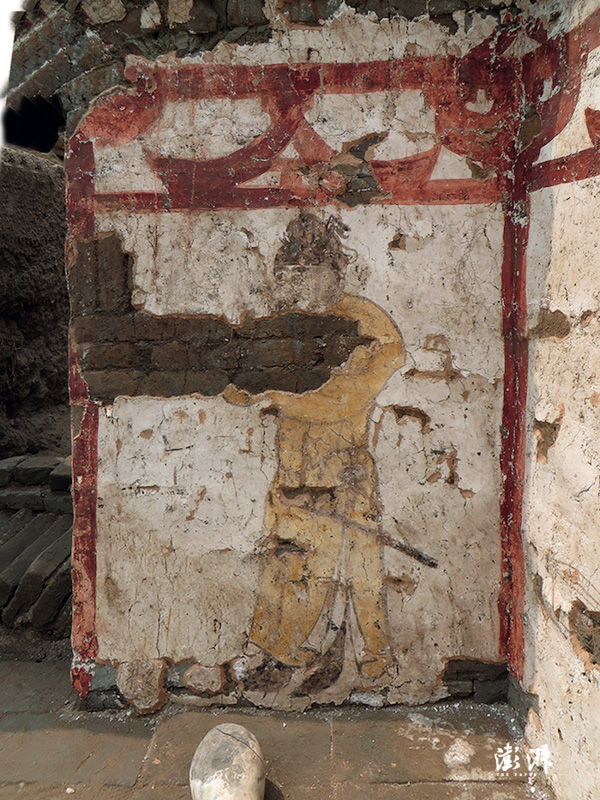
[Figure 12] Guards on the west side of the south wall of the M2 tomb of Helian Mountain in Taiyuan, Shanxi
Another example is the image of Hu Pu in the mural. In the Tang Dynasty, high officials and nobles generally used "household servants", and there were also many Hu people and Fan people in the entourage category. In the frescoes of the Tang Helian Mountain Tomb in Taiyuan, Shanxi, Hu Chu's entourage wears black boots, wraps a grain bag around his waist, and stands with a pole, as if he is obeying the master's instructions (Figure 13). In stark contrast to the Han servants unearthed from the same tomb. 
[Figure 13] Murals of the Tomb of Helian Mountain in Taiyuan, Shanxi
Artistic creation is the sublimation of historical reality. The historical records of ancient documents themselves do not have the perceptual visual effect of images. The latter will show an interactive relationship through the creation of painters. Perhaps the painters used the royal workshop to circulate the "serving map"" "Traveling Map" and other powdered editions, through relocation, grafting, and facelifting, show the social image of the fusion of Hu and Han at that time, linking the imagery of art and history, image and literature (Fig. 14). 
[Picture 14] Murals of Hu people driving in the early Tang Dynasty in the tomb of the Tang Dynasty in Konggang New Town, Xixian New District, Xi'an
Under the background of the hustle and bustle, singing and dancing at that time, the painters’ work and work were only their livelihood to support their families. The murals were not only for the owner’s enjoyment, but also to reflect the picture of the tomb owner’s family living and working in peace and contentment. Due to the short time before the burial, the "painting workshop" did not dare to be late. Sometimes it was created collectively and completed in sections; sometimes it was divided and cooperated. In the era when the Hu people were popular fans, painters invariably incorporated the fragile side of human nature into their paintings, truly expressing the bitterness and grievances of the lower-level characters, which may contain the immersive experience of the creators themselves. In the archaeological documents unearthed from the ancient tombs of Astana-Hala and Zhuo in Xinjiang, some Hu people's technical craftsmen are recorded. Among them, the painters include Shi Xianghu, He Xianghu, Zhu Shami, Zhu Adui, etc. Special people, there are also South Asian Tianzhu people. It can be speculated from this that it is not nonsense that large cities such as Chang'an have migrant painters of the Hu people. The essence of artistic creation is a kind of spiritual activity, often not just imitating, but expressing the main body of the work in a variety of ways and vividly. Judging from the existing materials, the painters in the Middle Ages strived to be different, so the murals also showed a variety of characteristics.
The painting condenses the scenes of ethnic conflict and fusion. The society at that time was like an invisible big net, and the Hu people who entered China were included in the social life of China. We do not know whether these Hu people were doing the dirtiest, most tiring and most dangerous jobs. As inferior people, They must exchange their master's approval, and they must allegiance to the master's decree authority. Although the details of life have been obliterated in the history books, the images of the Hu people in the murals are not a templated and fixed paradigm, and even a little casual, with a "humorous" and "jianghu spirit", showing the vivid life of the Hu people at that time. On the one hand, although they are low-level people, they are at least free people who can make their own choices, allowing people to see the more complex aspects of the society at that time.
3. The art "craftsmanship" of surrealism
The key to art archaeological research is to see people through things. After the Hu people entered China, their fate was ups and downs. Some were miserable and unreliable, and some were still rich. The tomb murals deeply participated in the continuation of the cultural lifeline and the outline of the spiritual picture. With the help of the image of Hu people, the painter strengthened the excavation and expression of the deep meaning of Hu and Han, and conveyed a vivid picture of social life at that time. 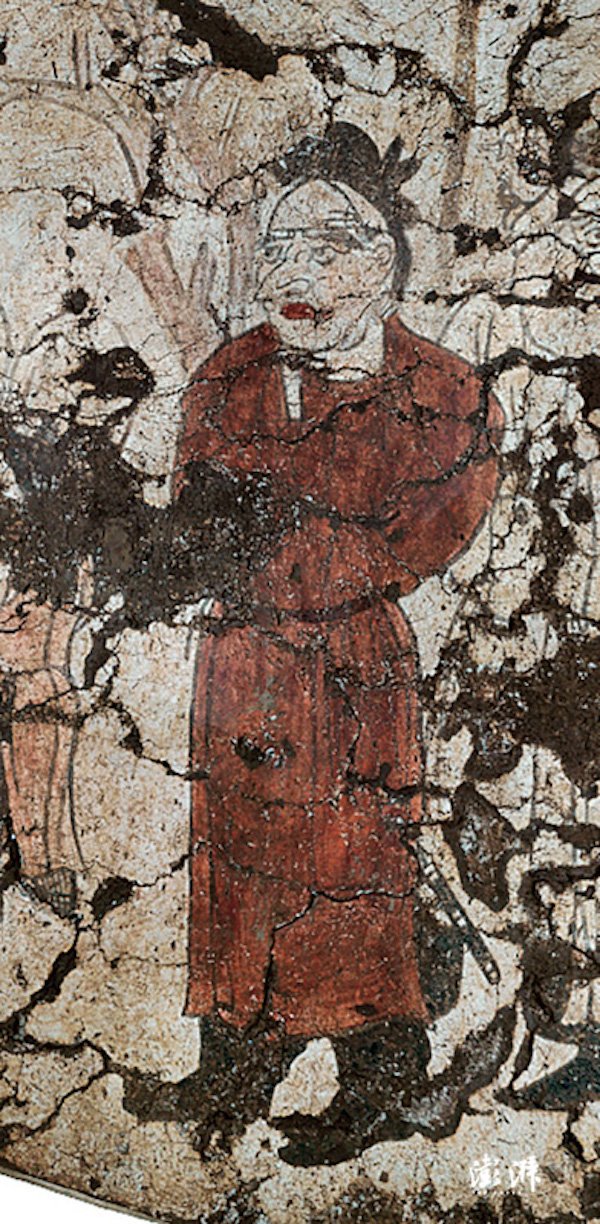
[Figure 15] One of the murals of the early Tang Dynasty in the Tang Tomb in the Konggang New Town, Xixian New District, Xi'an
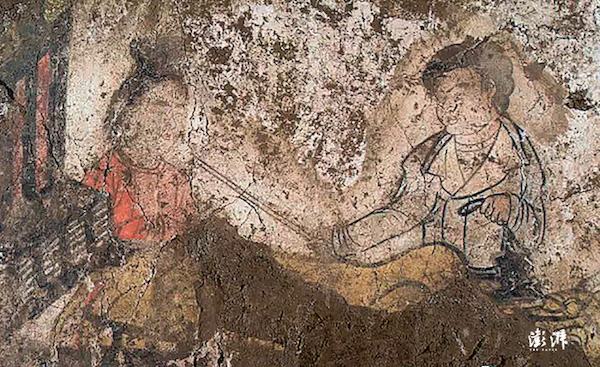
[Picture 16] The second mural of the early Tang Dynasty in the Tang Tomb in the Konggang New Town, Xixian New District, Xi'an
People distinguish Hu people mainly by facial features, such as deep eyes and high nose, curly hair, beard, long neck. By depicting the joys, sorrows and joys of various Hu people’s faces, painters express invisible things with visible images and demeanor characteristics (Fig. 15, Figure 16]. The face is the most exposed part of the human body. There are sincere gestures, humble obedience, greetings to the master, and ambiguous wry smiles, which intuitively show the mood of people at that time, giving the viewer a sense of reality and immersion. Different painters, painters, and painters are distinguished by the master and employers according to the level of the paintings. The "craftsmanship" they embody is not the same as the "official craftsmen" and "master craftsmen" of the Royal Ministry of Industry. art value. 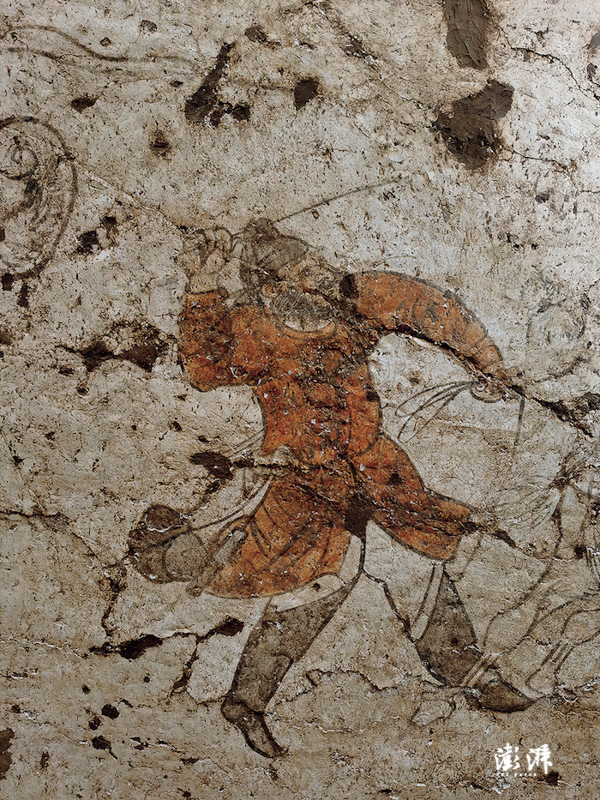
[Picture 17] Hu Man in Tang Kangshanda Tomb in Konggang New Town, Xixian New District, Xi'an
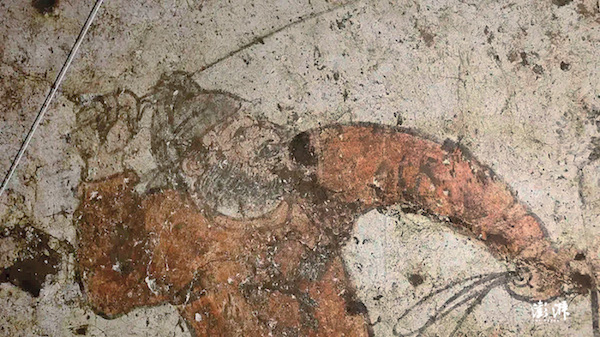
[Picture 18] Picture of Hu people at Tangkangshanda Tomb in Konggang New Town, Xixian New District, Xi'an (part)
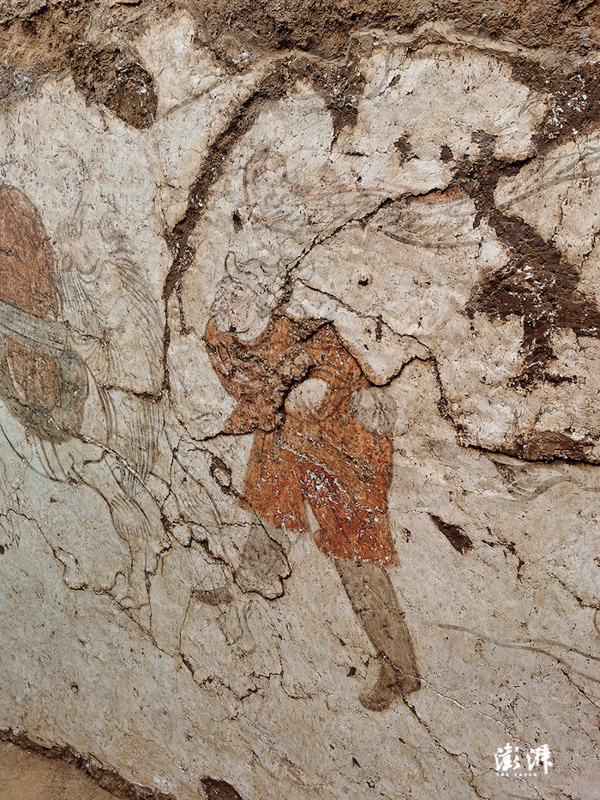
[Picture 19:1] Picture of Hu people in Tang Kangshanda’s tomb in Konggang New Town, Xixian New District, Xi’an

[Picture 19:2] Hu Man in Tang Kangshanda Tomb in Konggang New Town, Xixian New Area, Xi'an (part)

[Picture 19:3] The Hu people in the Tang Tomb in the Konggang New Town, Xixian New District, Xi'an, walking on horses
Small and medium-sized tomb murals belong to "outdoor painting". Painting in a family cemetery in the wilderness is completely different from painting under a fixed light source indoors in a city square. The color is affected by the difference in season and natural environment. In the murals of Kangshanda's tomb in the Tang Dynasty unearthed in Xianyang Konggang New District, Xi'an, some Hu people lead horses, and some hold sticks and shout for livestock (Figures 17 to 19). The setting of the scene fully considers the depiction of the characters; after the first draft of the material is approved by the family of the tomb owner, it is then drawn on the tomb passage or the wall of the tomb, so as to draw a complete mural work. 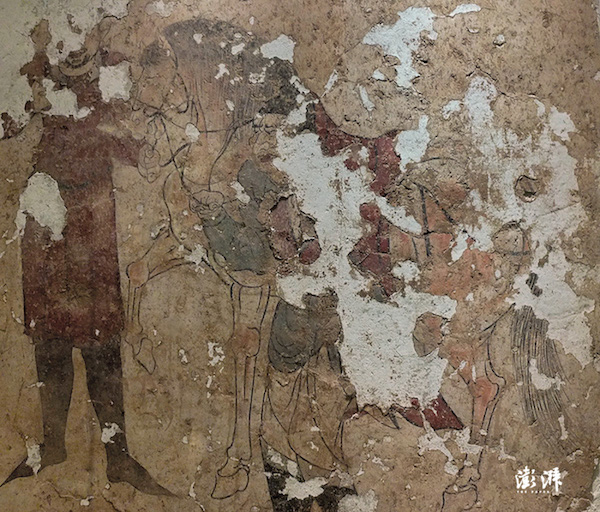
[Picture 20: 1] The frescoes of Hu people holding horses in the tomb of Concubine Wei in Tang Zhaoling
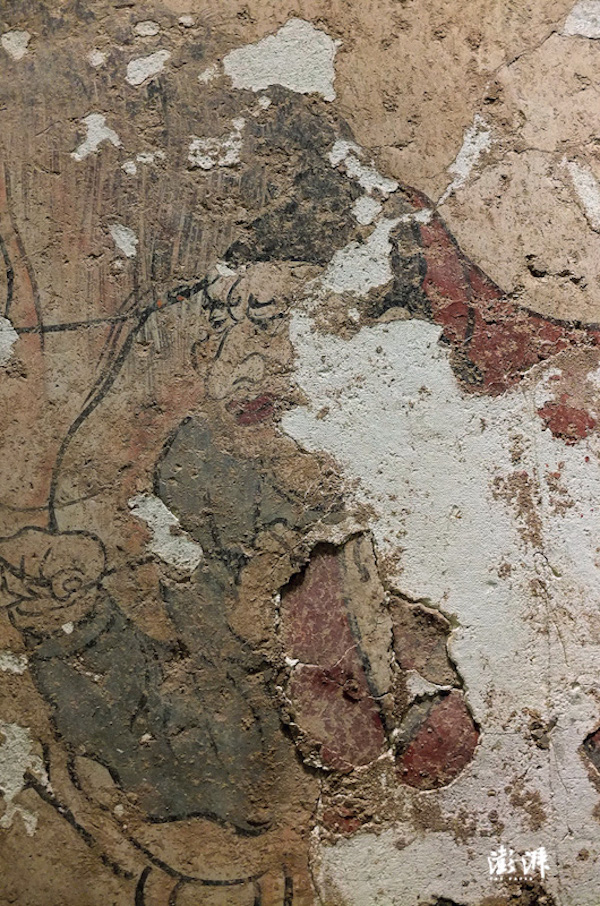
[Picture 20:2] The mural of Hu people holding horses in the tomb of Wei Guifei, Zhaoling of Tang Dynasty (part of Hu people)
After the tomb owner is buried, it is impossible to see the reappearance of his life, but in order to meet the ceremonial dignity and treat death like life, the process of "being human" must be conceived on the mural to find the destination of the soul. The power of the mural image can be seen from this. . The Hu Ren's tired, numb, and pale face was both worried and frightened, but also showed a hopeful smile. Amplifying the physicality of the characters, the protruding eyes of the Hu people become a window for visual expression (Fig. 20), so that the images of the Hu people on the tomb walls are not cold idols, but return to the real human nature. There seems to be life under the pen.
Some people think that the painter has contempt and irony for the Hu people, and most of what he captures is the false smile and treacherous face of the Hu people, which is discriminatory. Some people think that the image of the Hu people is the fantasy of the painters, wearing exotic costumes, eagle nose and beard, as if playing a new role to satisfy people's appreciation. The author does not want to give a misleading analysis on this, because ethnic contact, especially prejudice that crosses group boundaries, and discrimination against foreign minorities by local dominant ethnic groups will occur in any society, and the painter's depiction of characters will help people understand. (Figure 21) 
[Picture 21] Daoyiwei of the Tang Tomb in Konggang New Town, Xixian New District, Xi'an
In particular, it should be pointed out that painters, painters, and painters of different ranks and identities in the Tang Dynasty were very mobile, which was rare for the descendants of the previous dynasties. In the nineteenth year of Kaiyuan (731), six "painters" were sent to Mobei to paint murals for Que Teqin, the younger brother of Pijia Khan. These six master craftsmen painted battle scenes on the four walls of the temple, and painted portraits that the Turks had never seen before. Pija Khan sent people to send the painters back to the Central Plains. It is estimated that these six painters belonged to the "Ministry of Works painters" of the imperial court. In the ten years of Tianbao (751), during the Battle of Talas, the Arab Khorasan Army captured Du Huan, a native of Chang'an. Shu and Liu Chu”, these two Chinese painters painted murals for the palace buildings in Baghdad. “Qi” or “Qi” refers to the draft, which is to draw up line drawings for the composition of the murals. Historical data suggest that at that time, painters traveled around and were familiar with the customs of various ethnic groups, and were no strangers to the appearance and life scenes of all kinds of Hu people. 
[Figure 22] Murals in the fourth year of Qianfu in the late Tang Dynasty in Tianshui, Gansu
After the An-Shi Rebellion, the number of barbarians in the tomb murals decreased sharply, the painters were scattered in the social turmoil, their lives were precarious, and the level of artistic creation was also declining day by day. Now, in October 2020, the so-called Hu people paintings in the fourth year of Qianfu of Tang Dynasty (877) unearthed in Boyang Town, Tianshui City, Gansu Province [Figure 22] are actually murals painted in folk tombs after Qinzhou broke away from Tubo occupation in the late Tang Dynasty. Very blunt and sluggish, and the character modeling is rigid. 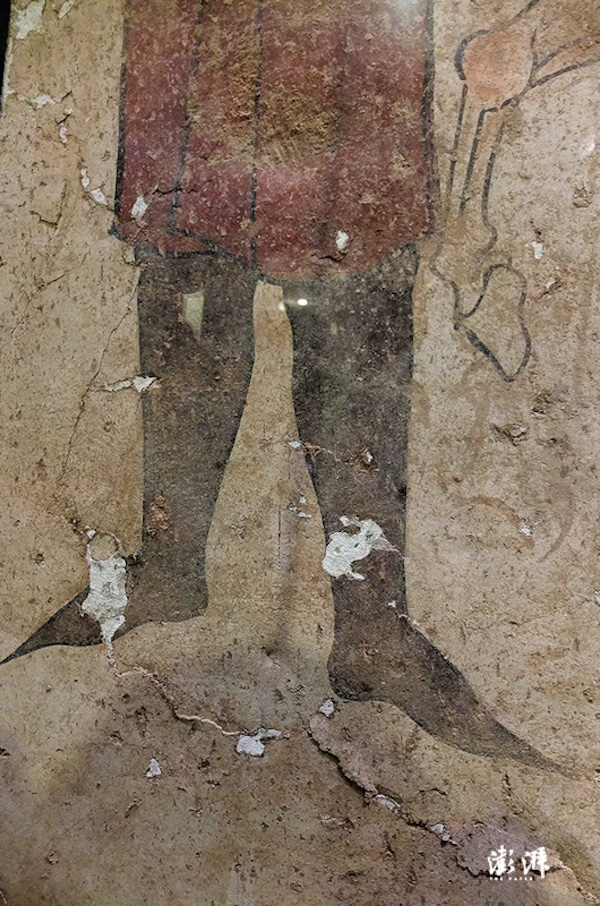
(Figure 23) Hu Ren pointed boots
When an unknown painter or painter painted murals for the tomb owner, they had the pursuit of real "craftsmanship". At that time, the creative circle had a hyper-realistic tendency towards details, and some even painted fine details, even the sharp corners worn by Hu people's feet. The boots are clearly depicted (Fig. 23), and even the coloring supplements are worthy of praise, "the color is pure and elegant", but if it is rigid and lacks agility, it will be judged as "idiotic" Craftsmanship". The painters are also humble people, who can see the truth of the world and human conditions. They have a cold eye to read the world, and have the same feelings for the Hu people who are also humble. The servants, guards, soldiers, etc. are ugly and have no dignity. The painter captures and depicts them, reflecting the context of social inequality in the normal life of fireworks.
Mr. Chen Yinke once said: "The spread of foreign barbarian customs must have the background of mixed living of different species." The Hu and Han ethnic groups lived together for hundreds of years from the Southern and Northern Dynasties to the Sui and Tang Dynasties. The trend of cultural integration can be said to have permeated the land of China, but the ethnic differences still remain. Basically unchanged, although many Hu people or other minority descendants as a whole, some of them have entered the mainstream class of Han people and successfully entered the class mobility; while those at the bottom of society are even more disappointed, even if some Hu people People have been promoted by their own efforts and have separated from the life of the original class, but when they encounter social turmoil, they will still fall into the disadvantaged class and live a humble life that is difficult to get rid of. 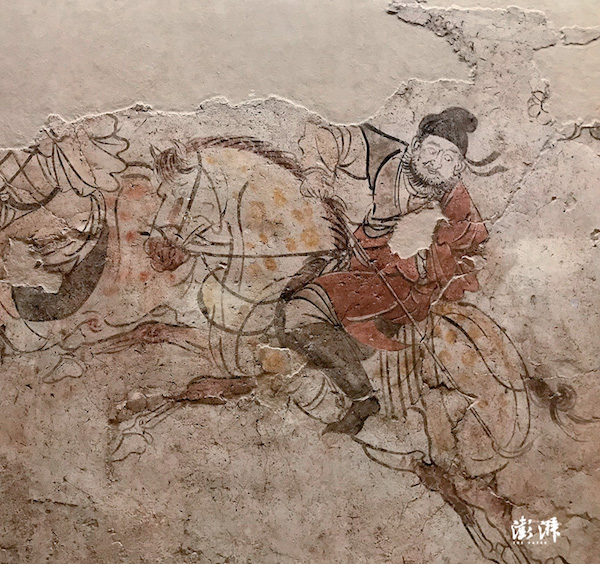
[Figure 24] Hu people playing polo in the tomb of Li Xian in Tang Dynasty
Some people believe that from the perspective of the superb techniques and artistic performance of the murals in the tombs of the Tang Dynasty, the brushwork during this period began to gradually change from the separation of sparse and dense to flexible application, and the coloring changed from plain filling to beautiful rendering, and character modeling. From the initial stagnation to elegant rhythm, it reflects the trajectory of the change of aesthetic level. The newly released medieval tomb murals broaden the horizons of the field of art research, and also bring more new materials for understanding the development of medieval social civilization (Figure 24). The popularity of the image of Hu people in tombs has concealed the design images of Confucian filial sons and Taoist ascending immortals since the Han Dynasty, which is a product of the interlaced historical environment of Hu and Han. Compared with the huge murals in the tombs of noble and high-ranking officials, the downsized murals in the tombs of the middle and lower classes are obviously much inferior, while the painters recklessly depict the images of the Hu people and the barbarians with their brushes. It can be seen from the records in "Famous Paintings of the Past Dynasties" that from the Southern and Northern Dynasties to the Tang Dynasty, there were painters who specialized in figure painting. The figure paintings are very rich, among which there are many "foreign figures" that record foreign monks entering China. There are many painters and painting monks from foreign countries entering China. They are familiar with exotic themes and techniques. Chao Art has brought fresh materials and inspired countless painters. The murals have left us a unique memory of visual art.
The Hu people in the murals emerged in a concentrated manner during the Middle Ages, giving us more than just a glimpse. This article does not discuss the specific ups and downs of the lower-class Hu people, but focuses on the colorful daily life. Mural art is not only a tool for sacrifice and commemoration, but a window to re-examine the state of the Sui and Tang Dynasties. The vigor of the integration of Hu and Han continued for a century and a half from the early Tang Dynasty to the prosperous Tang Dynasty. Under this cultural vitality, the Hu people, Fan people and other living beings who lived in Han at that time could have their own living space, and they could not do without it. A framework for legal hierarchy constraints and the protection of class rights. In the end, "entering China" became "melting China", spreading the cultural splendor of the Middle Ages toward the prosperous Tang Dynasty, and rendering the primary color of the strong national power.
Note: This article was preached and exchanged at the “International Symposium on Visual Culture and Material Culture in Medieval China” held by the Central Academy of Fine Arts on October 31, 2021.
(The author of this article is the Advanced Institute of Humanities and Social Sciences of Shaanxi Normal University, the original title is "The Art Image of the Lower Hu people in the Newly Published Middle and Ancient Tomb Murals", the full text was originally published in "The Palace Museum Journal", No. Notes are not included when the news is published with the author's authorization.)